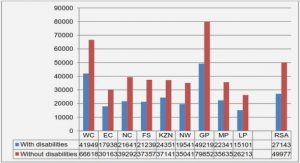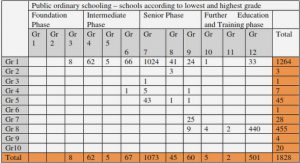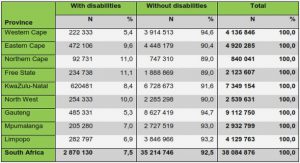Get Complete Project Material File(s) Now! »
Inflow conditions and modeling of the internal boundary layer
The modeling of the inner boundary layer has been an intense area of research in the recent years, which still remains challenging as proved by the various strategies enforced by Brès et al (2013,2014)[45, 47, 44], Bogey et al (2014)[37], Liu et al (2013)[147], etc. Eastwood et al(2012) specifically underlined the complexity of modeling the numerous small near-wall streaklike structures with an affordable CPU cost. Depending on the Reynolds number ReD and the complexity of the jet, the boundary layer can be calculated in LES, in RANS, modeled by a wall function or partially skipped. For example, Bogey et al. directly resolved laminar (2012)[41, 40, 38] or transitional (2016)[38] boundary layers perturbed by vortical disturbances, whereas Brès et al (2013,2014) [45, 47, 44] used a wall model approach developed by Bodart & Larsson [24], in which the boundary layer is calculated with a RANS approach on a specific structured grid and coupled with the LES calculated on the global grid. Le Bras et al. (2015)[141] also enforced a WMLES approach based on the model of Bocquet et al. (2012)[23], while Chauvet et al. (2007) [67], Brunet (2010, 2012)[57, 55], Eastwood et al (2011)[92], Tyacke et al (2015)[213] among other, used an hybrid RANS/LES approach in which the boundary layer is treated with RANS following DES-like principles. On the contrary, Liu et al (2012)[147] have chosen to impose a slipping condition on the inner wall of the ducts, before triggering fluctuations thanks to wall roughness.
Inlet mean flow profile
Most of the time the computational domain inside the ducts starts between 0.5 and 1 diameters upstream of the exit, as in the studies of Uzun & Hussaini [215] or Bogey et al. [34, 39, 41, 40, 36, 38].
In such jets exhausting from a short pipe flow, the exit boundary layer thickness is controlled thanks to the prescription of a mean velocity profile at the inlet boundary condition, which in turn determines the boundary layer thickness at the nozzle exit. In the case of initially laminar shear layers, the Blasius laminar boundary-layer profile has been widely used by Bogey et al. [34, 39, 41, 40, 36, 38] through the polynomial approximation.
Turbulent forcing
As seen paragraph 2.1.2.2, many authors performed numerical investigations of theeffects of the turbulence rate in the exit boundary layer. As previously mentioned, some authors have initially considered that the nozzle lip receptivity to acoustic waves was sufficient to sustain the Kelvin-Helmholtz instabilities (Andersonn et al. 2005[7]). However, in practice, the introduction of turbulent fluctuations to the nozzle mean velocity profile to trigger efficiently the shear layer development. To do so, the turbulent inlet boundary must satisfy certain conditions: it must be stochastically varying, on a large range of time and length scales, while ensuring compatibility with the Navier-Stokes equations ; in terms of accuracy, it should also provide the shortest possible adaptation length to establish realistic turbulence and, in aeroacoustic purposes to avoid the creation of significant spurious noise ; at the same time, the inlet condition must be easy to implement, must provide flexibility in the turbulent properties setup, and should not increase the CPU cost. Several methods have been developed over the last two decades to treat turbulent boundary conditions of LES/DNS simulations (see the reviews of Keating et al. (2004)[125] and Tabor & Baba-Ahmadi (2010)[205]). Tabor & Baba-Ahmadi classified turbulent inlet conditions for LES computations in two main categories:
• The precursor simulation methods, that store the results of a preliminary computation to re-use it at the inlet of the actual computation.
• The synthesized turbulence methods, that try to generate a random field at the inlet which has suitable turbulence-like properties.
Treatment of complex geometries
As mentioned previously, two main approaches can be referenced in the literature concerning the treatment of complex jets as twin jet, co-axial jets, close-coupled nacelleto- wing configuration, etc. An approach developed by Shur et al. [187] is to use a first RANS simulation of both the explicit nozzle geometry and the downstream jet to extract the flow field at the nozzle exit and impose it at the inlet of a second Implicit LES (ILES) calculation of the jet flow. Another approach is to simulate both the explicit nozzle and the jet in one hybrid RANS/LES simulation.
Mixing devices
Pure LES has already allowed to accurately simulate some chevron nozzles (structured grid as Uzun & Hussaini (2011)[214], unstructured grid as Brès et al. (2012)[58]) and, less accurately, mixer nozzles (unstructured grid as Fosso Pouangué et al. (2014)[97]). However, up to now, several nozzle devices have been simulated through an hybrid RANS/LES approach. Shur et al. (2006)[188] for instance simulated a chevron nozzle using their two-stage approach. Fully coupled approaches also demonstrated their capabilities for treating such devices, as proved in Chauvet et al.(2007)[65, 66, 67] who used ZDES to simulate a propulsive jet controlled by fluid injections and tabs and Xia et al. (2011)[235] who performed computations of a chevron nozzle with an hybrid RANS-NLES approach (Numerical-LES, without explicit subgrid scale filtering in LES region). Due & Morris [91] simulated supersonic chevron nozzle jets through a similar approach (URANS with deactivation of the turbulence model in free shear flows) using immersed boundary conditions.
Dual-stream configurations
Several dual-stream jets typical of the aircraft engine jet category have been simulated with a turbulence-resolving approach, with and without plug.
Viswanathan et al [225] investigated several jet noise reduction concepts for dualstream jets using the two-step approach developed by Shur et al. However, they noticed that the two-stage semi-coupled approach is not perfectly adequate to treat dual-stream staggered nozzles, since the boundary layer on the external side of the primary nozzle undergoes an adverse pressure gradient and cannot correctly be captured by this kind of implicit LES. A wall-resolved LES in this region remains prohibitive. Regarding dual-stream jet simulations with a central body, fully coupled methods have been used by Brunet (2010,2012) [57, 55], Eastwood & Tucker (2010)[93] or, more recently, Du & Morris (2015)[91]. Pure LES has rarely been used due to the grid count requirements of such approach which often leads to under-resolved simulations and not satisfying results (Fosso Poungué, et al. (2014)[97]). It can also be noted that Casalino & Lele (2014)[63] performed the simulation of a dual-stream jet with an external plug using a Lattice-Boltzmann approach. However, the method does not yet seem mature enough for transsonic and high Reynolds number jet simulations. Actually, the only numerical studies encountered in the consulted literature that deal with dual-stream jets with a secondary underexpanded jet are the ones of Shur et al.
Installed configuration
Vuillot et al. (2010)[231] have used unstructured LES to simulate a configuration of dual-stream nozzle with pylon, but the LES setup was highly under-resolved and the mixing layers exhibited a nonphysically strong laminar behavior along a distance of several diameters downstream of the exit. Ramamurti et al. (2015)[173] performed simulations using also unstructured LES on a nozzle-pylon configuration and simulated only the core jet in underexpanded conditions, but the same issue, even though less critical, seems to occur.
Eastwood & Tucker (2011)[92] performed a RANS-NLES simulation on the same kind of configuration but with a dual-stream subsonic jet. No turbulent forcing at the nozzle inlet was prescribed, leading to initially laminar shear-layers with strong Kelvin-Helmholtz vortices and little small-scale turbulence.
Turbulence modeling
If the viscosity is neglected, the governing equations for the flow field can be simplified to the Euler equations, with no turbulence involved. However, when the non-linear mechanisms are preponderant at high Reynolds numbers, turbulent flows are dominated by vorticity dynamics and involve many different spatial and temporal scales which are correlated. The resolution of the Navier-Stokes equations up to the smallest scales implies many constraints. The computational cost of such a Direct Numerical Simulation (DNS) becomes rapidly prohibitive and must be restricted to academic configurations at low Reynolds numbers, up to few thousands. For example, Spalart et al. [202] estimates that a DNS on a complete aircraft would require about 1016 mesh points. Thus, the current computing capabilities impose to model turbulent interactions.
In the Kolmogorov cascade theory, the major part of the kinetic energy is conveyed by the biggest structures, which interact with the mean motion and whose kinetic energy is too high to be dissipated by the viscosity. This energy is transferred to the smaller structures by a mechanism of eddy stretching, up to a certain scale of eddy, the scale of Kolmogorov, permitting the viscous dissipation. This smallest length-scale for eddy structures is noted . We can distinguish three ranges of scales depicted in figure 3.1:
• the integral scales, enclosing the biggest structures, carrying the major part of the energy and interacting with the mean flow.
• the inertial scales which are involved in the cascade mechanism.
• the disspative scales.
Table of contents :
Nomenclature
1 Introduction
1.1 General context
1.2 Industrial motivations in numerical predictions
1.3 Scientific motivations
1.4 PhD objectives and organization of the thesis
2 Literature review
2.1 General remarks about jet physics
2.1.1 Main features of mixing-layers
2.1.2 Subsonic jets
2.1.3 Supersonic jets
2.1.4 Coaxial jets
2.1.5 Summary on jet physics
2.2 Numerical simulation of turbulent jets
2.2.1 Numerical modeling strategy
2.2.2 Numerical schemes
2.2.3 Inflow conditions and modeling of the internal boundary layer
2.2.4 Treatment of complex geometries
2.2.5 Summary on numerical simulations of jets
3 Numerical and experimental methods
3.1 Numerical modeling of turbulent flows
3.1.1 The Navier-Stokes equations for compressible flows
3.1.2 Turbulence modeling
3.1.3 Solving of Navier-Stokes equations
3.1.4 Random Flow Generation technique
3.2 Experimental data set: MARTEL
3.2.1 Geometry and operating conditions
3.2.2 Experimental test rig
3.2.3 Measurements
3.3 Conclusion
4 Effect of ZDES numerical setup on the resolved jet physics
4.1 Introduction
4.2 Mesh generation for ZDES
4.3 Numerical setup
4.3.1 Restrictions for the choice of time steps
4.3.2 Computational description
4.4 Results and discussion
4.4.1 Instantaneous fields
4.4.2 Averaged fields
4.4.3 Spectral analysis
4.5 Conclusion
5 Turbulence injection in ZDES jet simulations
5.1 Numerical settings
5.1.1 Computational description
5.1.2 Spectral acquisition
5.2 Results – discussion
5.2.1 Advection of the turbulence in the ducts
5.2.2 Effects on the overall structure of the jet
5.2.3 Mixing layers development
5.3 Conclusion
6 Conclusions and perspectives
A Preliminary study: steady generative boundary conditions setting
A.1 Numerical setup
A.2 Effect of of total quantity variations on mass flow rates
A.3 General remarks about generative conditions
B Post-processing
B.1 The turbulent stress-tensor
B.1.1 Definitions and hypothesis about the Reynolds stress tensor
B.1.2 Calculation of the filtered Reynolds stress tensor Rij
B.1.3 Calculation of the modeled part SGS
B.1.4 Practical estimation of the Reynolds stress tensor
B.2 The azimutal average




